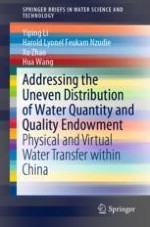This book presents a selected literature review and case studies for both physical and virtual water transfer. It offers an overview to showcase the interprovincial physical and virtual water transfer within China, and then demonstrates the effects of both approaches in dealing with regional water scarcity; the three cases presented in the Yangtze River Basin demonstrate the role of physical water transfer in improving water quality and restoring water ecosystems; while a Shanghai case highlights the impact of Shanghai’s virtual water import on water quantity and quality stress to other regions. This book promotes systematic approaches combining both virtual and physical water transfer solutions to deal with water quantity and quality issues. The book is intended for senior undergraduates, graduate students, lecturers and researchers in water management.
